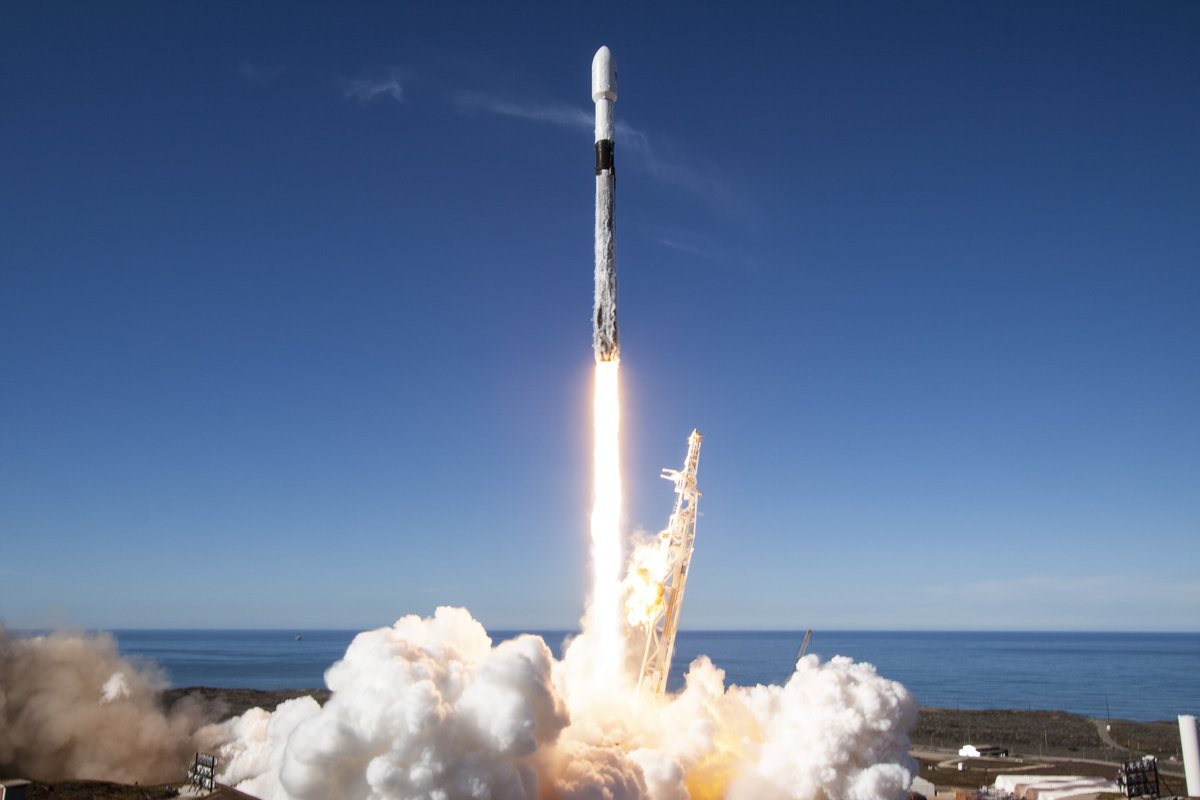Kazakhstan has successfully launched two small satellites into Earth’s orbit from the launch pad located in Santa Barbara, California. The single orbital-class rocket known as Block 5 Falcon 9, designed by Elon Musk’s company SpaceX, was used to send the payload into space.
The rocket lifted off from Vandenberg Air Force Base on Monday carrying a total of 64 miniature and small satellites representing 34 different organizations and 17 countries. Kazakhstan’s two satellites called KazSciSat and KazSTSAT went into orbits on December 3.
Monday’s launch was the first time Kazakhstan used an American-made rocket carrier for its satellites, forgoing Russian-made Proton launchers that were used in the past. Proton, which is considered one of the most recognizable Russian rockets, has lost almost all of its customers; just a decade ago it was Russia that controlled over 60 percent of the market.
KazSciSat was designed by Kazakhstani developers and will study the ionosphere, the area of Earth’s atmosphere where terrestrial weather meets space weather. The second satellite, KazSTSAT, is an imaging microsatellite that will be used to take high-resolution aerial photographs around the globe and is said to have a resolution of 18.7m. It weighs more than 100 kg and was developed by a joint team representing the Kazakhstani company Ghalam and British Surrey Satellite Technologies (SSTL).
“I am pleased to confirm that following separation from the launch vehicle a joint commissioning team here in Guildford have successfully made contact with KazSTSAT and established that all initial systems checks are nominal,” the official website of SSTL quoted Sarah Parker, the managing director at SSTL, as saying.
KazSTSAT is the second satellite SSTL has worked on with Kazakhstan. KazEOSat-2, a medium resolution satellite designed and manufactured by SSTL, was launched in 2012. Together with KazEOSat-3, the satellite is expected to broaden the scope of information services provided to the region including mobile and internet connections and help satisfy the demand within Kazakhstan for broadband connection.
Kazakhstan’s very first satellite, KazSat-1, went into orbit for a 12-year mission after being transported to space via the Russian-made Proton-K launcher in 2006. Two years later malfunctions occurred, and by November the satellite stopped responding to control signals. In mid-2009, KazSat-1 was transferred to what is known as the graveyard orbit, since its broken condition was irreversible.
Launch costs and SpaceX’s competitive pricing has shaken up the rocket launch industry. Its prices are much cheaper than those offered by Roscosmos. The launch cost of the re-used Falcon 9, for example, is about $49 million versus Roscosmos’ price tag of $65 million to launch the Proton M.
Because multiple satellites are launched in a single boost, the entire cost for a launch does not fall on any one country. Kazakhstan’s Defense and Aerospace Minister, Beybut Atamkulov, said using Falcon 9 cost the government in Astana a little over $1 million.
“The cost of transportation to the United States is a part of a total of $1.3 million for the launch of two satellites,” Atamkulov said in November according to reports by KazPravda.
At the same time, officials in Kazakhstan are not completely shutting down doing business in outer space with their neighbors to the north. Kazakhstani may still use Russia’s Soyuz and Proton rockets for future operations.
Aset Nurkenov, a spokesperson for the defense and aerospace industry ministry recently announced the Astana's intent to launch satellites from Baikonur, Kazakhstan’s only cosmodrome and the world’s first and largest operational space launch facility. Despite it being situated on Kazakhstani territory, the facility is operated by Russia.
With Monday’s launch, SpaceX has broken its own record after using the rocket booster for three missions in a row. Falcon 9 has since returned safely to Earth landing on the company’s drone ship stationed in the Pacific Ocean.







 President Ilham Aliyev shed light on the evolving contours of the peace process with Armenia during an international conference in Baku this week. ...
President Ilham Aliyev shed light on the evolving contours of the peace process with Armenia during an international conference in Baku this week. ...
 Azerbaijan and Armenia started the process of demarcation of their border on Tuesday, with the installation of the first border markers based on ge...
Azerbaijan and Armenia started the process of demarcation of their border on Tuesday, with the installation of the first border markers based on ge...
 Armenian sappers commenced on Monday mine-clearance operations in the territories adjacent to the Saint Mary Church in village of Voskepar (Armenia...
Armenian sappers commenced on Monday mine-clearance operations in the territories adjacent to the Saint Mary Church in village of Voskepar (Armenia...
 Iran and Pakistan have signed eight cooperation documents in various fields, and agreed to strengthen ties to fight terrorism in the region.
Iran and Pakistan have signed eight cooperation documents in various fields, and agreed to strengthen ties to fight terrorism in the region.



